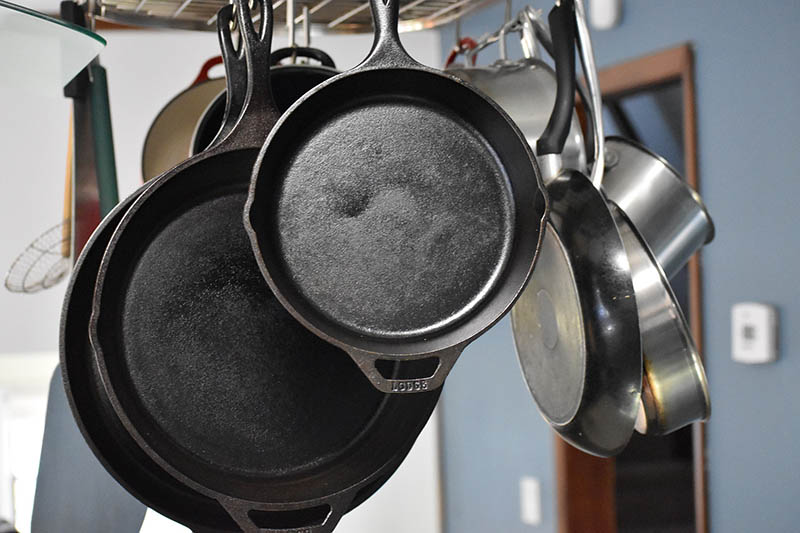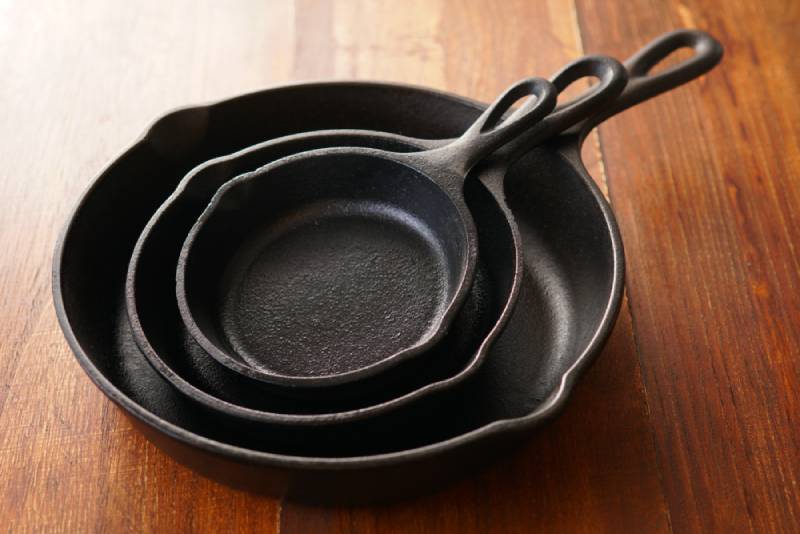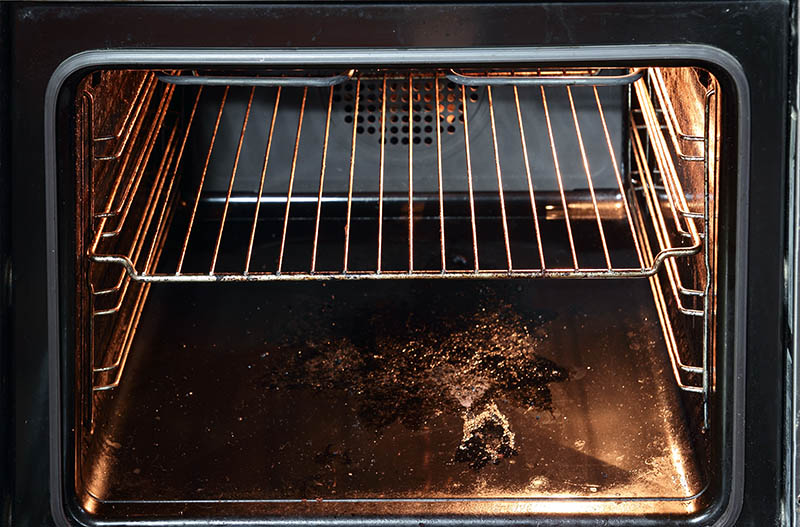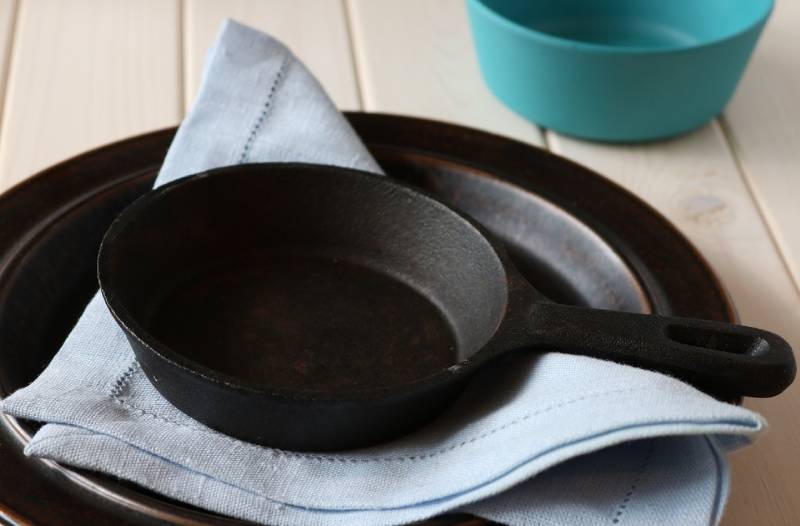How To Store Cast Iron Pans Properly (8 Expert Tips)
-
Jeff Weishaupt
- Last updated:

Cast iron pans are a durable, functional, and dependable addition to your cookware collection. They have been an important part of cooking for centuries. After all, you can use cast iron pans to make various dishes, such as cornbread, stir-fried meals, and even fried chicken.
However, the longevity of cast iron pans depends on how you store them. These utensils require a little attention and care to last longer since they can rust easily. The ideal place to store cast iron cookware should be clean and dry.
You must also completely dry your cast iron pans before storing them to prevent all the possible chances of rusting. But if your pans do become rusty, you can treat them with vinegar, soap, and re-seasoning. Let’s go through eight great tips on how to store cast iron pans in your kitchen:
Top 8 Tips for How to Store Cast Iron Pans
1. Look for a Dry Place
Finding a completely dry place is crucial when storing cast iron cookware. That’s because moisture is the primary reason behind rusting of cast iron pans.
Many people leave their cast iron pans on the stove. While the area is generally safe, you should ensure that it is dry. However, remove the pan when using the stove, as steam or water can make it wet. You can also store cast iron cookware in your kitchen cabinet or cupboard as long as you keep these areas dry.
Avoid areas that remain wet most of the time, such as under the sink. This area has plumbing pipes that may leak, make your cast iron pan wet, and cause rusting.

2. Use Paper Towels When Stacked Pans
If you are storing multiple cast iron pans, you should separate them with paper towels. But how? Simply put pieces of paper towel between the pans when stacking them after washing. You can do the same with cast iron skillets and pots.
Doing so prevents scratches and damage to the utensils. It also ensures that the water absorbs instantly from the cast iron pans, thereby preventing rust formation.
3. Use Your Oven
An oven can be an excellent place to store cast iron pans. Many prefer this option as it is generally safe and stays dry most of the time. Of course, you can use your oven for this purpose when it is not in use.
However, wooden utensils should not be stored in the oven as it is a fire threat. So, if your cast iron pan has wooden parts, you shouldn’t use this tip. There is also a chance that your cast iron cookware gets hot inside the oven. Thus, always use oven mitts when removing the pan from the oven.

4. Remove the Pan’s Lid
Proper ventilation is necessary when keeping cookware, especially those made of cast iron. Unfortunately, storing a cast iron pan with a lid can trap moisture and cause rusting. So, always remove the pan’s lid before storing it to ensure the water completely evaporates.
5. Season Your Pan Before Storing It
Seasoning makes cast iron cookware nonstick. Seasoned cast iron pots or pans are more likely to clean and dry quickly. They are also less likely to rust in the storage area. So, if your car iron pan is not seasoned, do it before storing the utensils.
To season the pan in the oven, preheat your oven to 300 degrees Fahrenheit. Meanwhile, coat the pan with grease, oil, or lard and put it in the oven to bake for an hour. Then, wear oven mitts to remove the pan and wipe off the excess grease or oil.
To season at a stovetop, heat the pan on the stove until it becomes hot to the touch. Then, add a small amount of oil, lard, or grease to the pan and coat it thoroughly. Leave the pan on the stovetop for a few minutes and then remove it. Wipe off any excess oil, lard, or grease, and you’re done!

6. Clean the Cookware Properly
Another important tip when storing cast iron pans is cleaning them properly beforehand. The best way is to not leave the pans for a long time after using them. Instead, clean the pans right away to prevent the leftover food from sitting on the pan’s surface.
Always wash your cast iron cookware in hot water and no soap. Use a sponge or a non-metal brush to rub the cast iron pan’s surface. Also, don’t soak the utensils in the sink filled with water, as it can lead to rusting very quickly.
If your pan has a lot of stubborn food residual, add some kosher salt and fill it with warm water. Then, wrap a towel around tongs and scrub the pan until the stuck food particles come out. Once done, rinse and dry the pan thoroughly.
7. Dry the Cast Iron Cookware Before Storing
As you know, moisture is the number one enemy of cast iron pans, as it can cause instant rusting. So before storing the pans, you must ensure that they’re completely dry. Use a clean, dry towel to wipe off excess moisture from the pan.
To be more sure, you can also put the pan on the stovetop at low heat. Let it heat for a few minutes and turn off the heat when no water droplet is left on the pan. To prevent rust, you should also season the pan with lard, oil, or grease. Remember to cool off the pan before storing it.

8. Remove Rust From the Pan
Sometimes, rusting in cast iron pans becomes inevitable, no matter how hard you try to prevent it. These utensils are made to last for years, so you can easily remove rust.
If your cast iron pan shows initial signs of rusting, you should not ignore them and try to find a solution. Of course, throwing the pan won’t be the ideal choice. So, what options do you have? Here are a few effective ones:
Soak the Pan in Vinegar
Vinegar is a valuable ingredient used to remove stubborn stains from different surfaces. Fortunately, it can also remove rust from your cast iron pans. All you have to do is mix equal parts of water and white vinegar in a tub, bucket, or sink and soak the pan. Leave the pan for a few hours.
Keep checking the pan after every hour. Once you see zero or minimal signs of rusting, remove the pan from the vinegar mixture. Rinse it thoroughly with water and pat dry before storing.
You need to be extra careful when removing rust from your pan with vinegar. That is because if you leave the pan in the mixture even after the rust is gone, the vinegar can eat into the cast iron pan’s surface. You don’t want that!
Scrub Leftover Rust With Soap
As mentioned above, soap should never be used on cast iron cookware. But when used carefully, it can easily scrub out any leftover particles after the vinegar rust removal technique. You can also use a mild detergent and warm water solution for scrubbing.
Make sure to do the entire procedure with your hands. Never put the pan in the dishwasher. Instead, a steel wool or green scrub pad would work amazingly in removing stubborn particles. Once you’re done with scrubbing, dry the pan completely with a towel.
Re-Season the Pan
If you have previously performed the vinegar soak and soap methods, you will see that your cast iron pan’s seasoning has been removed. So, it’s recommended to re-season your pan after removing rust.
Re-seasoning methods typically differ depending on the type and size of your cookware. You should research your cast iron pan beforehand. However, you can use aluminum foil or oil to re-season your cast iron pans.
Conclusion
You should know how to store cast iron pans to extend their lifetime and make them look clean as new. The most important thing to remember is to dry the pan before storing them in a cool, dry place. You should also put towels between the pans when stacking them after washing them. This will prevent rusting for a long time.
However, if your pan has signs of rusting, you can remove them by soaking the pan in the vinegar mixture. Lastly, ensure that your cast iron pan is seasoned with oil, lard, or grease to prevent damage.
Featured Image Credit: Ernest_Roy, Pixabay
Contents
